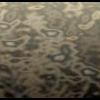-
Content Count
136 -
Joined
-
Last visited
Content Type
Profiles
Forums
Calendar
Everything posted by Rob Knisely
-
Inverted hooks have their place, but... It's much easier to get a fly to ride/swim right when the hook point is down, and is conducive to traditional flies without weight. You have to keep the fish in mind. For trout, there's more of chance of penetrating the eyes and vital head area on the hook set; bass and panfish this is less of a problem, but may occassionally happen. This can be minimized by keeping the hook point up flies small or with a narrower hook gap. I have a pattern that is tied on that Mustad curved hook with the offset point (I forget the number) that rides hook point up. When a fish strikes, (I'm guessing) the fly must turn to the side because they're always hooked in the corner or lower lip. Hook point up is good for bass and bottom-crawling flies. First of all, the bass inhale their prey (or fly) like a vacuum, rather than just picking it up or biting it, so the fly's position (unless it's moving pretty fast) doesn't matter much. Secondly, there is more upper lip area to hook without danger of hitting vital organs. Whether one way is better than the other... just depends on the circumstances.
-
Hey Graham, coupla questions... Does that glass-bead bugger tend to ride hook-point up? Do you put the dubbing in a loop and wrap up/between each bead, or just loosely/tightly dub between each? Looks good! TroutBum: very nice! I might try a couple of those, but the only salmon and steelhead in Kentucky are in the frozen aisle.
-
Here is one of my "staples." I would not be without these on any trout stream. I tie these on size 18 3906B hooks. Usually fished by themselves, either dead-drift or on the swing, very occassionally with a small shot if the flow is good. That's a goose biot for the body, brown mole dubbing, a starling feather for the hackle, and a Killer Caddis-Gun Metal glass bead for the head.
-
Not sure exactly what you're looking for, but maybe I can give you some ideas. There is amazing versatility in soft hackles for such a simple design. Hooks: usually wet fly (Mustad 3906, 3906B for ex.) in sizes 10-18 Bodies: you can use the tying thread, floss, wire, dubbing, tinsel, peacock herl, biots, quills, and more, plus any combination. Sometimes there's a dubbed thorax right behind the hackle (or peacock herl thorax) Hackles: any soft webby feather, either tied in and wrapped, or (as when the fibers are too long) spun in loop and wrapped. Length to suit, but generally from just touching the hook point to the back of the bend (sometimes shorter, sometimes longer, depending on what you're try to acheive) Head: Nice rounded and glossy, or a bead, or peacock/ostrich herl. You can either copy other folks' nice patterns, or look around at your materials and come up with your own. For ideas on colors/styles, lean toward looks that mimic what is in nature, and/or throw in an attractor element (bead, flash, complimentary color, etc.)
-
Leaky... that braid is pretty neat! There goes another fly right on the To-Do list! Thanks for all the welcomes and compliments. Something of a New Year's Res. to be more of a participant. Now my biggest goal is to post enough to get out of the "Bait Fisherman" category! Ouch!
-
Another shout-out from Kentucky... I like the Light Cahill hatch (Stenacron interpunctatum): just before the hatch, you can do very well on #14-12 nymphs (BH Hare's Ear or species-specific patterns). Beautiful event when the bugs are on stream and airborn. During the hatch and then at the egg-laying event, you get to use "nice-size" #14-12 light colored dries= easy casting, easy to see, lots of action. Plus at that time of the year, the weather is perfect!
-
That would be fox. Judging from the color and the gray underfur, I'd say red fox from the lower sides, near the belly.
-
Hi John, To add... The herls that are stripped with bleach are a medium shade gray, but brittle. Those "cleaned" with a pencil eraser are more of a dark brownish gray. In either case, if you apply lacquer over the stem for durability, this darkens it some.
-
Hi Peddler, Those finely marked feathers are used on the Goode's Doubletake nymph as tail and legs. Would be good on other nymphs. Also the tail on Tellico nymphs. I second Steelheader for use on streamers: shoulders, tails, throats collars... I would save the large-spot ones for these. Also collars on bass bugs. Great on wet flies for tails, throats, and wings. Personally, I wouldn't do without guinea hen feathers.
-
Hi Shep, You might consider no underbody and make the body from clipped embroidery thread... You can get any shape, any size you want, plus patterns, colors, etc. Soaks up water to become slightly heavy (slow sink... good for lakes around weedbeds) or simply wrap the shank with lead wire before tying in the embroidery thread. For a how-to on clipped-thread bodies: Clipped Thread Bodies
-
Okay, let's see if I can get a photo on here...(sorry if it doesn't show )

